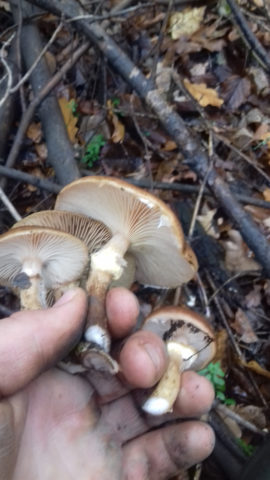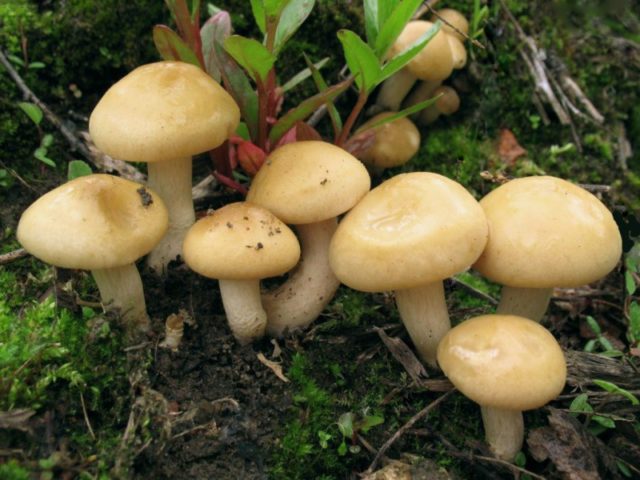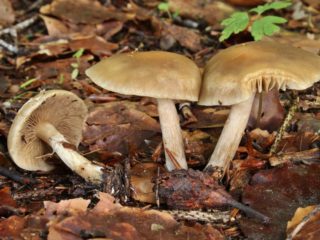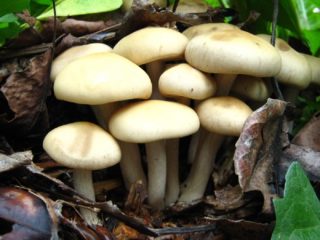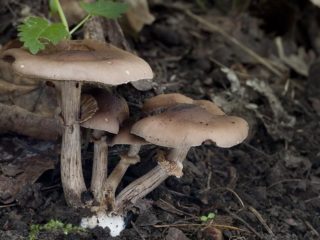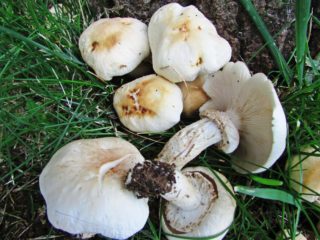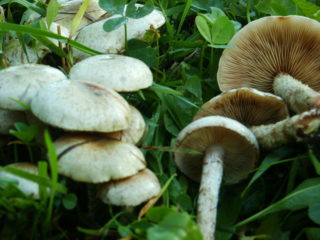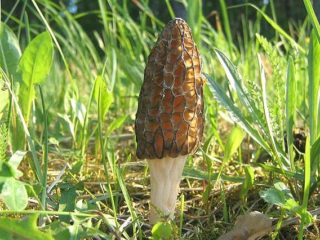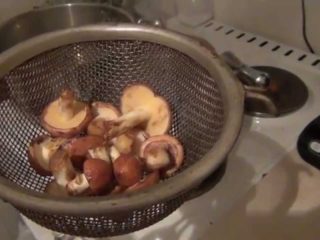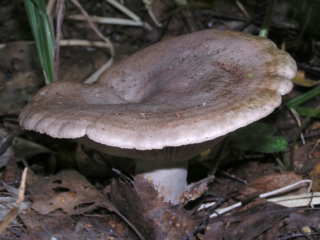Content
In the mushroom kingdom, the tough field (agrocybe is hard) belongs to the conditionally edible species. Some sources claim that it is unsuitable for food. But, as practice shows, the fruiting body of the fungus can be used for food and as a medicine.
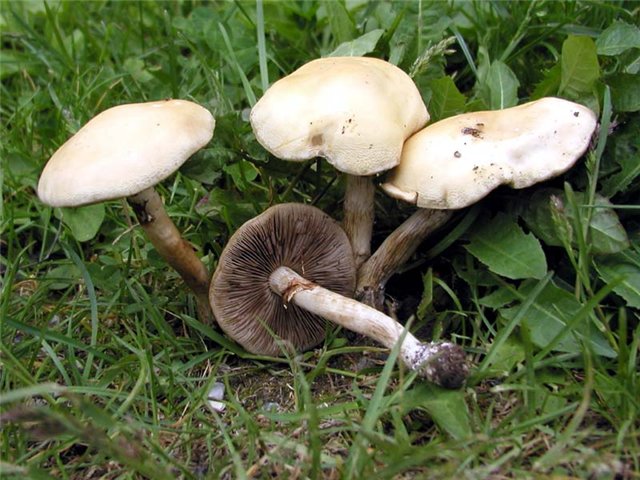
Agrotsibe can often be found in personal plots, vegetable gardens, orchards, and even in greenhouses.
Where the tough fieldworm grows
This type of mushroom can be found very often within the city. It grows from spring to early autumn mainly in the following places:
- lawns;
- roadsides;
- fields;
- meadows;
- gardens;
- greenhouses;
- vegetable gardens.
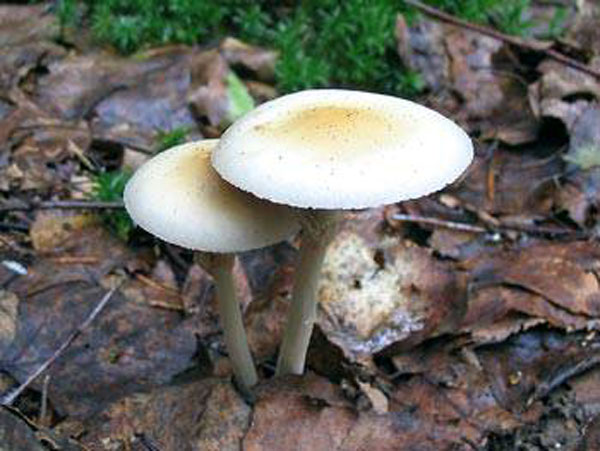
The field mushroom has a round cap with an implicit yellow tubercle
What does a tough field worker look like
The field mushroom has a flat white cap, with a diameter of about 3 cm to 10 cm. It is slightly yellowish in the center, there is a not pronounced tubercle. The cap of the vole is almost smooth, there are no scales or any wavy formations on it. But sometimes the remains of the bedspread remain at the edges. The correct shape of the cap is found mainly in young boletus mushrooms. Over time, it changes, as if blurred, covered with cracks, from under which a white cotton-like pulp can be seen.
The plates located under the fieldhead's cap are even, clean, not too densely spaced, not white, but grayish-brownish. They darken even more with age. For this reason, mushrooms are sometimes confused with champignons.
The leg of the stiff vole is thin and long, up to 12 cm long and 1 cm wide. Remains of a white film are visible at the top. As a rule, it has a smooth surface, but sometimes mushrooms with a shaggy or rough texture are found. The leg of the hard field is straight, cylindrical, only at the very end, where it connects to the ground, is slightly curved. It can also thicken at the bottom, but this is not always the case.
The field mushroom is hard to the touch, dense, hard. But if you cut it, there is a very small, inconspicuous cavity inside. Its flesh is white, slightly darker in the plates. Has a light mushroom smell, quite pleasant.
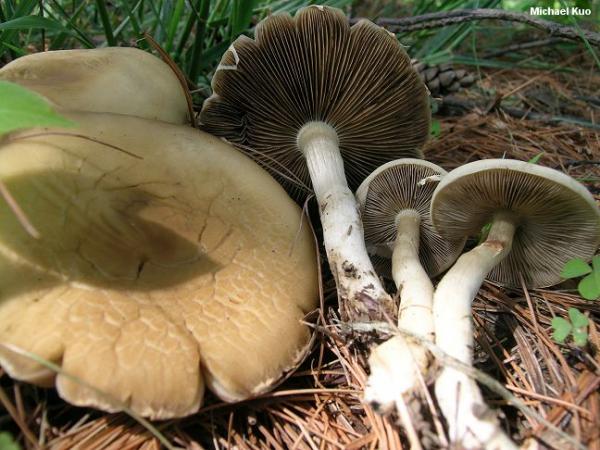
With age, the shape of the cap becomes blurry, its surface is covered with cracks
Is it possible to eat a hard field worker
Polevik hard belongs to the Strofariev family. Like all its relatives, the mushroom has a rather pronounced bitterness. You can't call it tasty, but it's edible. Of course, you need to consider where the mushroom grew. And if this is an urban lawn or a roadside, then it is advisable not to eat the fruit bodies collected in such zones.
Mushroom taste
Because of the bitter taste, mushroom pickers usually ignore the tough vole, which is also a conditionally edible mushroom, that is, it has no special nutritional value. This mushroom is of interest to specialists in traditional medicine, pharmacologists. It contains the antibiotic agrocybin, which is active against:
- pathogenic bacteria;
- fungi.
In modern pharmacology, since the middle of the twentieth century, when penicillin was discovered, every second antibiotic is now obtained from mushrooms. Such drugs compare favorably with synthesized drugs, as they are devoid of severe side effects. Mushrooms, including the hard field, are interesting to pharmacologists for another substance that is found in large quantities in the fruit bodies.
It is chitin, a polysaccharide that is part of the cell walls. It has found wide application in both medicine and agriculture. As it turned out, this substance is an excellent sorbent, superior to activated carbon in its qualities. It copes well with food poisoning, other disorders of the digestive tract, promotes rapid healing of wounds and burns. In agriculture, it is used to give plants resistance against unfavorable environmental factors, for example, pests, diseases.
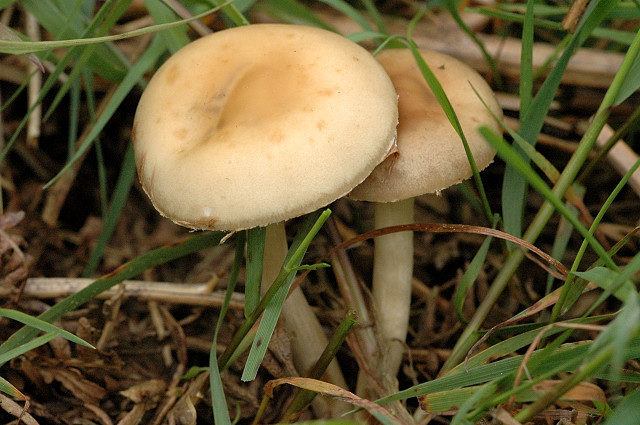
The early vole is like two drops of water similar to the solid agrocybe
False doubles
The solid vole has no poisonous counterparts. This mushroom is often confused with:
- thin-legged champignons;
- early vole.
Outwardly, they are very similar. Often these fruiting bodies are harvested as one species.
Collection rules
The rules for collecting mushrooms for both food and medicinal purposes are almost the same. First of all, you need to ensure that poisonous specimens, false doubles do not get into the basket. Mushrooms intended for drying do not need to be washed; it is enough to clean them of forest debris. Overripe, moldy, rotten and gnawed fruit bodies should not be collected.
While strong young mushrooms are best suited for culinary purposes, middle-aged fruit bodies are preferable for preparing medicines. The fact is that during the ripening of spores in fungi, the highest concentration of antimicrobial and other biologically active substances is achieved. So the fungal organism tries to protect the most valuable from microbial and animal attacks coming from the outside world.
Young specimens are suitable for food. Only when they are born, they already have a sufficient amount of nutrients. What is considered to be growth in the future, in fact, is not. This is just a stretching of the fruiting bodies while maintaining the same organic composition. No new nutrients are formed anymore.
Use
Medicines created from mushrooms are, as a rule, extracts (alcohol, water) or extracts (oil, alcohol). If you simply dry and grind the fruit body, enclosing it in a capsule or taking it in powder, tablet, then it will give off only a small part of its useful substances. The insoluble chitinous membrane is almost indigestible and thus retains the beneficial substances contained in the mushrooms. Therefore, it is the extracts that have become the main form of medicinal preparations created from mushrooms.
If strong bitterness is present, soak in cold water for about 24 hours before cooking.
Conclusion
Polevik is a conditionally edible mushroom. It can be used both as food and medicine. In folk medicine, it is used as an antiseptic in the form of alcoholic, water infusions.
